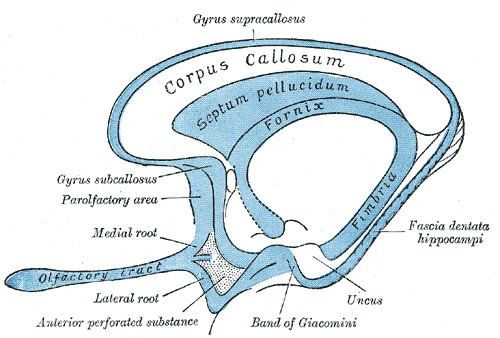Latin tractus olfactorius NeuroLex ID Olfactory tract TA A14.1.09.431 | NeuroNames hier-265 Dorlands/Elsevier t_15/12817042 FMA 77626 | |
 | ||
The olfactory tract is a bundle of afferent nerve fibers from the mitral and tufted cells of the olfactory bulb that connects to several target regions in the brain, including the piriform cortex, amygdala, and entorhinal cortex. It is a narrow white band, triangular on coronal section, the apex being directed upward.
It lies in the olfactory sulcus on the inferior surface of the frontal lobe, and divides posteriorly into two striae, a medial olfactory stria and a lateral olfactory stria. Fibers of the olfactory tract appear to end in the antero-lateral part of the olfactory tubercle, the dorsal and external parts of the anterior olfactory nucleus, the frontal and temporal parts of the prepyriform area, the cortico-medial group of amygdaloid nuclei and the nucleus of the stria terminalis.
Destruction to the olfactory tract results in ipsilateral anosmia.
